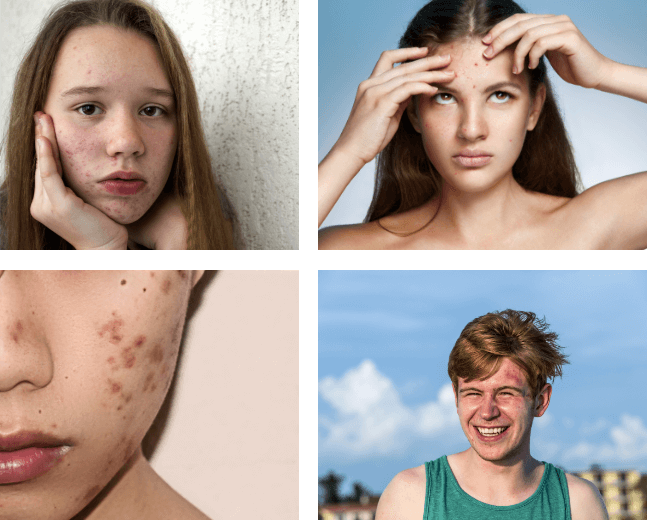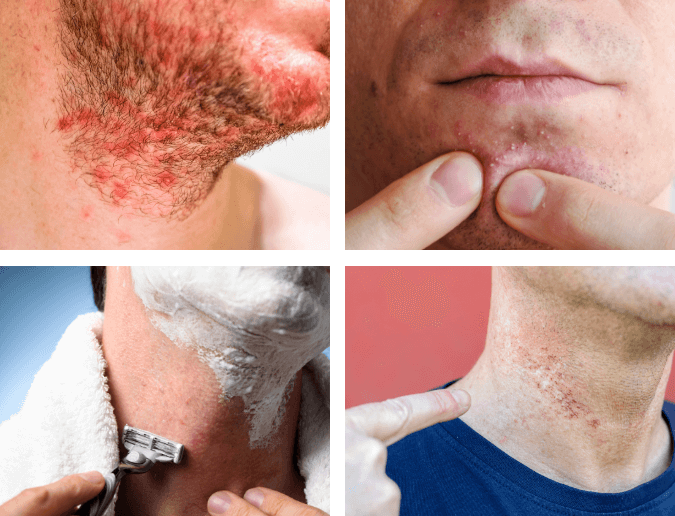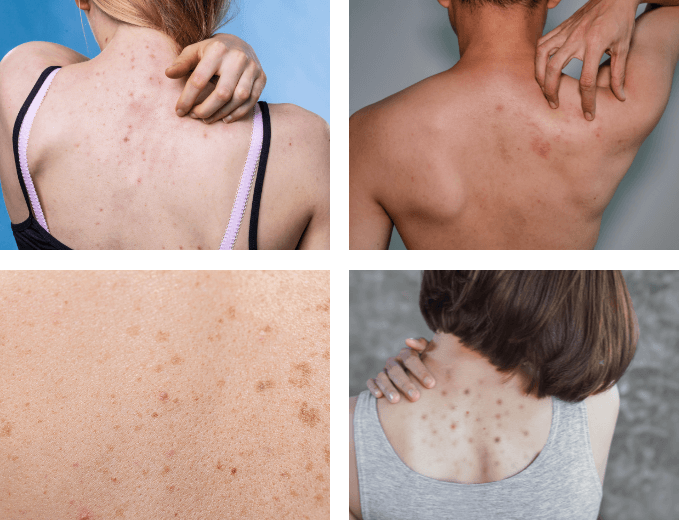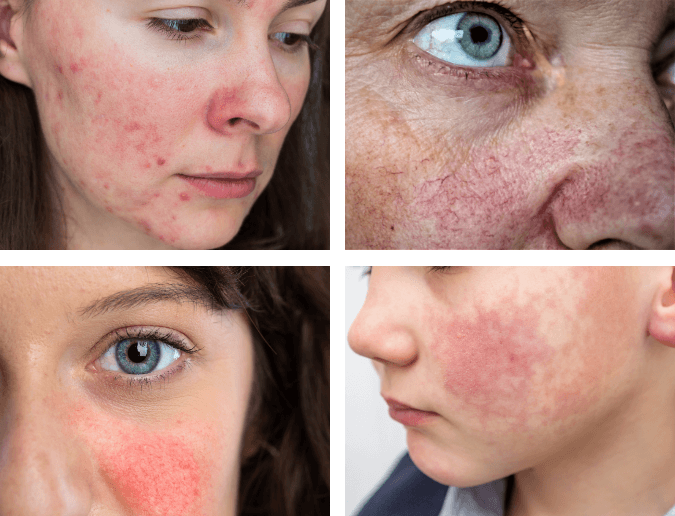Find your skin type
Finding your skin type is the first step in treating it.

The boost in testosterone that we experience during puberty can trigger acne because it makes the oil glands in our skin grow bigger. We produce more of the oily substance known as sebum. The sebum usually moves out of the oil glands and onto the surface through our pores so that it can protect our skin.
Folliculitis barbae is a type of folliculitis affecting the beard area due to infection with the bacteria Staphylococcus aureus. It occurs in men who shave and in men that do not shave. Deep-seated folliculitis barbae is called sycosis barbae and leads to scarring and areas of permanent hair loss.


Back acne commonly arises when excess sebum, bacteria and dead skin cells build up in pores, causing redness, inflammation and blemishes — similar to facial acne, except on your back. It can also be triggered by hormonal changes, which is why teenagers are often plagued with it, and why you may notice it pop up around your period or pregnancy; and daily habits like diet and clothing choices may also play a role.
Rosacea is a common skin condition that causes blushing or flushing and visible blood vessels in your face. It may also produce small, pus-filled bumps. These signs and symptoms may flare up for weeks to months and then go away for a while. Rosacea can be mistaken for acne, other skin problems or natural ruddiness.
